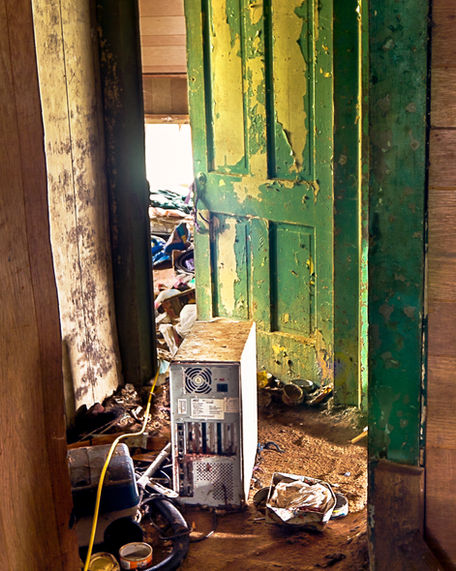The Poverty of Excess
Photographed from 2011 to 2019 in four cat-hoarder homes in Ulster County, New York, this project examines interiors overwhelmed by accumulation and neglect as sites of identity, illness, and late-capitalist material excess. (Full statement below)


The Poverty of Excess
This project was photographed from 2011 to 2019 at four cat hoarders' homes in Ulster County, New York to be used as evidence in animal cruelty cases. However, my intention was to document these spaces as part of my artistic practice, which focuses on the relationship between self and environment. The project explores how surroundings both reflect and affect individuals and society at large. While these specific environments are shaped by mental illness, they are also examples of late capitalism's omnipresent influence with its emphasis on global production and consumption of inexpensive goods.
Hoarding is a mental health disorder characterized by compulsive stockpiling of household items such as food, clothing, furniture, electronics and various collectibles. Hoarders are unable to discard or part with any possession, including disposable materials and garbage. Every surface in the house shows signs of neglect and extreme unsanitary conditions. The ability to amass large quantities of cheap consumer goods in spite of low economic status is evidence of how developed economies make excessive hoarding possible.
These photographs are also portraits of the individuals and their distinct personalities. Within the chaos, familiar motifs emerge. Nostalgic items like stuffed animals, folk art, and family photos suggest an attempt to curate memories and hang on to a sense of personal history and identity. However, any comfort these artifacts may provide is overshadowed by the sheer volume of possessions and waste. This accumulation, rather than signifying prosperity, becomes a marker of deprivation. A poverty of excess.
The Poverty of Excess tabloid newspaper photozine
On June 27th, 2025 I printed a 10" x 15" 32 page color tabloid style newspaper photozine of the Poverty of Excess project. This first edition is a limited printing of 100 and is available for $25 with free shipping to the US.


Video flip-through
















































